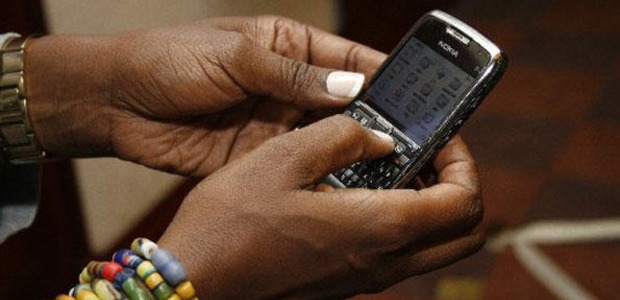advertisement
Mobile-network coverage reaching the last half billion people globally
Mobile-cellular subscriptions have reached almost 7.1 billion worldwide, with over 95% of the global population now covered by a mobile-cellular…

Mobile-cellular subscriptions have reached almost 7.1 billion worldwide, with over 95% of the global population now covered by a mobile-cellular signal while another 3.2 billion people are now online, representing 43.4% of the global population.
This is according to ITU’s flagship annual report dubbed as “Measuring the Information Society Report”.
The report also notes that all 167 economies included in the ITU’s ICT Development Index (IDI) improved their IDI values between 2010 and 2015 – meaning that levels of information and communication technology (ICT) access, use and skills continue to improve all around the world.
advertisement
The Measuring the Information Society Report is widely recognized as the repository of the world’s most reliable and impartial global data and analysis on the state of global ICT development, and is extensively relied upon by governments, international organizations, development banks and private sector analysts worldwide.
“ICTs will be essential in meeting each and every one of the 17 newly-agreed Sustainable Development Goals (SDGs),” said ITU Secretary-General Houlin Zhao, “and this report plays an important role in the SDG process. Without measurement and reporting, we cannot track the progress being made, and this is why ITU gathers data and publishes this important report each year.”
“ITU’s work in gathering and publishing statistics allows us to monitor the real progress being made in ICT development worldwide,” said Brahima Sanou, Director of ITU’s Telecommunication Development Bureau, which produces the report each year. “Progress is encouraging in many areas but more needs to be done – especially in the world’s poorest and remotest regions, where ICTs can arguably make the biggest difference, and help bring people everywhere out of extreme poverty.”
advertisement
By the end of this year, 46% of households globally will have Internet access at home, up from 44% last year and just 30% five years ago, in 2010. In the developed world, 81.3% of households now have home Internet access, compared to 34.1% in the developing world, and just 6.7% in the 48 UN-designated Least Developed Countries (LDCs).
Latest data show that growth in Internet use has slowed down, however, posting 6.9% global growth in 2015, after 7.4% growth in 2014. Nonetheless, the number of Internet users in developing countries has almost doubled in the past five years (2010-2015), with two thirds of all people online now living in the developing world.
Fastest growth continues to be seen in mobile broadband, with the number of mobile-broadband subscriptions worldwide having grown more than four-fold in five years, from 0.8 billion in 2010 to an estimated 3.5 billion in 2015. The number of fixed-broadband subscriptions has risen much more slowly, to an estimated 0.8 billion today.
advertisement
Over 95% of the global population is now covered by mobile-cellular services, meaning that there are still an estimated 350 million people worldwide who live in places which are still out of reach of a mobile network – a figure that has dropped from 450 million a year ago. But while 89% of the world’s urban population is now covered by a 3G network, only 29% of the world’s 3.4 billion people living in rural areas benefit from 3G coverage.
In 2014, the ITU membership adopted the Connect 2020 Agenda, which sets out a series of goals and targets for improvements in the growth and inclusiveness of ICTs, their sustainability, and the contribution of innovation and partnerships. The Measuring the Information Society report, for the first time, takes stock of where the world stands today in terms of these goals and targets, and makes estimates for their achievement by the year 2020.
The report notes that the proportion of households projected to have Internet access in 2020 will reach 56%, exceeding the Connect 2020 target of 55% worldwide. More needs to be done to increase the number of Internet users, however – the report predicts that only 53% of the global population will be online in 2020, significantly below the Connect 2020 target of 60%.
More action will also be needed to ensure that targets for growth and inclusiveness are not missed in developing countries, and in particular in LDCs. The Connect 2020 Agenda aims to ensure that at least 50% of households in developing countries and 15% of households in LDCs have access by 2020, but ITU estimates that only 45% of households in developing countries and 11% of LDC households will have Internet access by that date.
The report notes that the price of mobile-cellular services continues to fall across the world. In LDCs, the mobile-cellular price basket continued to fall, coming down to 14% of gross national income per capita (GNI p.c.) by the end of 2014, compared to 29% in 2008.
The greatest decreases over the past year have been in mobile-broadband prices, which have made the service on average between 20% and 30% more affordable worldwide.
By early 2015, 111 economies (out of 160 with available data), including all of the world’s developed countries and 67 developing countries, had achieved the Broadband Commission for Digital Development’s target that the cost of broadband services should be no more than 5% of average monthly income. However, 22 developing countries still had broadband prices which corresponded to more than 20% of GNI p.c.
The report also notes that while tremendous progress has been in made in terms of mobile-broadband affordability, fixed-broadband prices increased between 2013 and 2014, after falling consistently for a number of years. In the LDCs in particular, fixed-broadband services remain unaffordable, and most of the countries ranked at the bottom of the fixed-broadband basket are LDCs.
The 2014 average fixed-broadband basket corresponded to 98% of GNI p.c. in LDCs, up from 70% a year before, a sharp increase that will not improve the already very low uptake of fixed broadband in the world’s poorest countries.